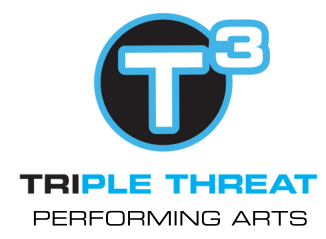
In the world of vocal instruction, mastering the art of guiding aspiring singers as to how to teach voice Lessons’ requires a rich blend of technical precision, artistic expression, and mentorship. Whether you’re a seasoned vocal coach or embarking on your teaching journey, personalized instruction and an unwavering passion for singing are essential components of effective teaching.
The Foundation of Instruction in learning how to teach voice lessons
1. Expertise in Vocal Technique:
In vocal instruction, an instructor’s knowledge of vocal technique forms the bedrock. Understanding the intricacies of vocal anatomy, breath control, resonance, and a repertoire of vocal exercises is indispensable. This knowledge is the scaffolding upon which a comprehensive vocal education is built. Moreover, continual learning and staying updated on the latest research and methodologies are essential for providing students with the most informed and beneficial guidance.
2. Tailoring Lessons to Individual Students:
Each student is a unique canvas with distinct needs, strengths, and learning styles. Assessing their abilities and vocal range and understanding their goals helps customize a teaching approach that caters to each individual. A personalized instructional plan fosters improvement and builds rapport and trust between the teacher and the student.
Core Principles of How to Teach Voice Lessons
3. Fundamentals of Singing:
Teaching the fundamental elements of singing is crucial. Mastery of breath control, pitch accuracy, tone quality, and articulation sets the stage for a solid vocal foundation. It’s equally vital to stress the importance of proper warm-ups, cool-downs, and techniques to avoid vocal strain, ensuring the longevity and health of a singer’s voice.
Diverse Teaching Approaches
4. Varied Teaching Techniques:
Employing a multitude of teaching methods to convey vocal concepts effectively is critical. Demonstrating vocal techniques through singing, utilizing visual aids such as diagrams or videos, and delivering clear, concise verbal instructions enhance a student’s comprehension and application of vocal principles.
Nurturing artistic performance
5. Encouraging Artistic Expression:
Guiding students to express emotions, interpret songs, and develop stage presence is integral to moulding well-rounded performers. Nurturing confidence and individual artistry is as important as honing technical skills. It’s not merely about hitting the right notes; it’s about conveying a story and evoking emotions through song.
Cultivating a supportive environment while learning How to Teach Voice Lessons
6. Providing constructive feedback:
Maintaining a delicate balance between positive reinforcement and constructive criticism is pivotal to fostering a student’s growth. Recognizing progress and offering specific guidance for improvement contributes to a supportive and encouraging learning atmosphere.
The Journey Toward Mastery 
7. Incorporating Variety and Continuous Evaluation:
In the continuous journey of mastering how to teach voice lessons, introducing a diverse repertoire of musical genres and consistently evaluating a student’s progress becomes pivotal. This holistic approach to learning remains flexible, allowing for the adaptation of lesson plans according to a student’s development. It’s in this dynamic blend that the art of effective voice instruction truly unfolds, ensuring continual improvement and a well-rounded musical foundation.
Commitment to Continuous Development in How to Teach Voice Lessons
8. Continual Professional Growth learning How to Teach Voice Lessons:
Building a network with fellow vocal instructors, engaging in self-reflection, and committing to lifelong learning is essential for becoming an exceptional voice teacher. Sharing experiences, seeking insights, and keeping abreast of new teaching methodologies ensures that instructor remains dynamic and effective in their craft.
Mastering the art of teaching voice requires technical proficiency, empathy, adaptability, and a profound passion for nurturing talent. The journey involves shaping exceptional vocalists and empowering them to find their unique voices and embrace the joy of singing.
In the journey of ‘how to teach voice lessons,’ teachers play a pivotal role in helping students become great singers. By seamlessly combining academic knowledge with individualized lessons and fostering a supportive learning environment, the path of guidance becomes a joyful meeting point for skill enhancement.
Voice teachers serve as significant mentors to the next generation of singers. It’s not just about teaching someone to sing; it’s also about building confidence and nurturing artistic expression. The focus lies in helping individuals discover and enhance their unique style.
As a teacher, the role extends beyond imparting knowledge; it involves sparking a love for singing and music. You are more than just a teacher; you are shaping future artists, influencing the world of music, and instilling a deep love for music in every note and every student.
Frequently Asked Questions (FAQ)
1. What essential skills are needed to be an effective voice instructor?
You must know much about vocal techniques to teach voice well, such as controlling your breath, hitting the right pitch, and making a good sound. An essential skill for a good voice teacher is being able to customize lessons, give helpful comments, and create a friendly learning environment.
2. How can voice instructors tailor lessons to meet individual students’ needs?
To make lessons fit each student, you need to know their skills, flaws, voice range, and preferred way of learning. Based on these factors, personalizing activities, routines, and teaching methods can make learning much more fun and effective for students.
3. What is the significance of a supportive learning environment in voice instruction?
A supportive learning environment encourages students to take risks, learn from mistakes, and grow as singers. Constructive feedback, positive reinforcement, and a safe space for exploration and expression foster an environment where students can thrive and develop their vocal skills.
4. How can voice instructors continue their professional growth?
Vocal teachers teach singing and help people who want to be singers find their voice. They teach every student to be confident, express themselves artistically, and love music. By doing this, they shape the next generation of skilled singers.
5. What role do vocal instructors play in shaping the future of singers?
Vocal teachers teach singing and help people who want to be singers find their voice. They teach every student to be confident, express themselves artistically, and love music. By doing this, they shape the next generation of skilled singers.
Conclusion
Mastery of teaching voice is an ongoing process that combines formal knowledge with individualized lessons. Practical voice lessons require a careful mix of mentoring and direction, covering everything from basic singing skills to developing artistic expression and stage personality.
In the journey of ‘how to teach voice lessons,’ giving prospective artists helpful comments and creating a friendly learning environment is crucial. The dedication to ongoing professional development also ensures that teachers are always on the cutting edge of new teaching methods.
Teaching voice is a continuous journey, combining technical expertise with personalized instruction. From foundational vocal techniques to fostering artistic expression and stage presence, effective voice instruction involves a delicate balance of mentorship and guidance













